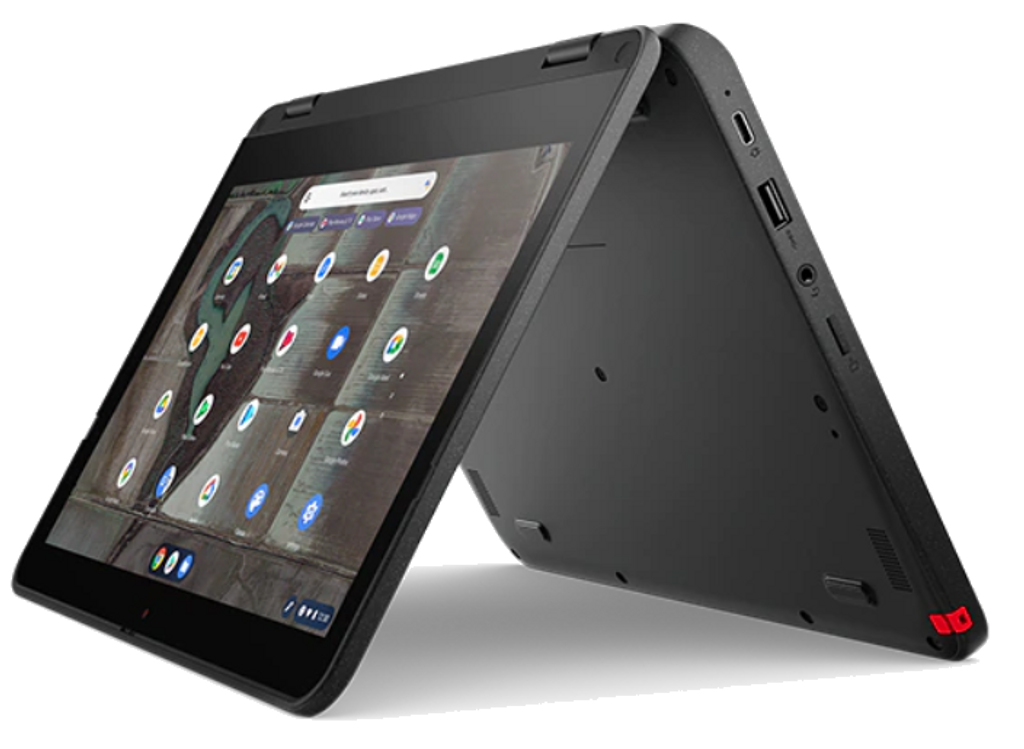
Company Blog
Fostering Equity Through Technology
Over the last few years, technology has become a necessity in education as the academic landscape continues to evolve. The once novel thought of technology intricately involved in the teaching process is now a critical educational tool in every educator's toolset.
The Benefits of Technology in Education
Although there are numerous advantages to utilizing technology in the classroom, the most crucial reason is that technology accommodates various learning methods. The ability to meet a student's learning needs where the student feels most comfortable fosters confidence that enhances student adaptation to technology. Technology allows teachers to accommodate every learning style, whether students learn best through lectures, reading, examples, or video. Also, students can learn via online videos, audiobooks, interactive online games, and more at their own pace. Since the content is online, it can be easily updated, ensuring that students always have access to the most current information.
Another significant benefit of technology in classrooms is that it increases student engagement and helps them retain information. The ability to learn is critical, but retention is even more crucial to a student's ability to utilize their newly obtained knowledge. According to research conducted at the Rochester Institute of Technology, the use of a technology-rich learning environment in several undergraduate engineering-technology courses has improved learning and decreased withdrawals from, or failing grades in, the courses.
"90 % of students involved stated that using the technology-rich environment, which includes a combination of tablet PCs, collaborative software, and multiple projection screens capable of capturing and retaining graphics and notations, helped them learn and retain the information better than traditional classroom lectures."
The Organisation for Economic Co-operation and Development (OECD) conducts tests every three years (PISA) of 15-year-olds globally, focusing on math, reading, and science. They employ optional student surveys on Information and Communications Technology (ICT) that specifically ask about technology use in the classrooms, for homework, and for broader academic applications. There were five crucial findings from the latest results that provide insight into the link between technology, student success, and equity:
- The type of device matters. The evidence suggests that specific devices provide a more significant impact than others on student outcomes. For example, while controlling for school type, student's socioeconomic status, and location, using data projectors and internet-connected computers in the classroom correlates with nearly a grade-level-better performance on the Programme for International Student Assessment (PISA).
- Geography matters. Since the tests were conducted globally, it could determine that technology was associated with higher student outcomes in the United States than in other regions.
- Who uses the technology matters. The findings indicated that enhanced student success and equity were afforded at a much higher level when the technology was in the hands of teachers. The reasoning also points to the fact that the teacher could effectively reach every student equally, allowing all students in a particular classroom environment to benefit equally.
- Intensity matters. The findings suggested that using technology in an educational setting requires an all-or-nothing approach. Since it found that students who use technology intensely (> 60 minutes daily) or not at all perform better than those with moderate use.
- The current performance level of the school matters. The data suggests that technology is associated with worse results in schools with a poor-to-fair school performance rating. The consensus on the reasoning for these findings indicates that these schools are not well equipped to use devices in the classroom.
An equally substantial benefit of technology in classrooms is it makes students active participants in the learning process. I am sure we are all familiar with the traditional method of teaching where the educator provides copious amounts of information to students, and their only involvement is to receive and retain the information. As you may know, this makes our students passive participants, and it inherently results in boredom and loss of interest. However, adding technology to our classrooms helps students engage with their learning material while promoting equity and student success.
Another focal benefit of technology in classrooms is that it allows teachers to affect more students effectively and confidently. This helps teachers to become experts in technology and more effective educators in the process. Technology will enable teachers to become even better educators and purveyors of student equity.
Technology Prepares Students for the Future
The future is now, or at least the preparation for it is now. As most would agree, this is the primary goal of every educational system, to prepare our students for the future and whatever comes next. Furthermore, the overwhelming majority of our students' futures will at some point incorporate joining the workforce, which increasingly means being comfortable with new technology.


Schools and universities must implement technology at the earliest stages of a student's academic career to allow maximum exposure and comfortability to technology. Through this approach, research indicates that a student has the opportunity to discover their limitless potential and bridge the gap that promotes equity. The end goal, of course, is to teach and educate our students, and technology allows educators to accommodate multiple learning styles while also delivering a more personalized curriculum.
How Technology Addresses Varied Learning Styles
Technology allows educators to further bridge the educational equity gap by creating a learning environment that caters to a student's learning style. There are three primary learning styles every student utilizes, and technology addresses these learning styles effectively and efficiently, thus providing equal opportunity for every student to reach their maximum potential. For example:
- Auditory learners rely more on spoken words rather than written words. Therefore, these students would perform better using recorded lessons, podcasts, and audiobooks.
- Visual learners utilize more sight than sound but typically read much faster than auditory learners and tend to pay more attention to details when reading. Regarding integrating technology into the classroom for these types of pupils, eBooks, PowerPoint lessons with graphs, interactive whiteboards, and videos or visually-oriented materials work best.
- Tactile learners perform best in an active learning environment. This learning style is focused on the student utilizing their sense of touch to convey lessons. Typically, this learning style under traditional teaching methods leads to boredom and distractions for tactile learners. However, technology introduces increased opportunities to have a more hands-on learning experience. The students will feel more engaged when they can click a mouse, swipe a screen, or hold a device like a tablet in their hands while also learning. Technology allows tactile learners to learn in an environment conducive to student success, empowerment, and enhanced equity.


The Importance of Equity to Student Success
Student equity is defined as helping students achieve equal outcomes on success indicators compared to their own percentage in the community, student body, or other student groups. It is also defined as providing personalized resources needed for all individuals to reach common goals. In other words, the goals and expectations are the same for all students, but the support required to achieve those goals depends on the student's needs. In a word, it means equality for all students, and this dynamic's importance is unfathomable. As educators, you understand that although a student's potential is unlimited, their potential is still governed by the access and availability of resources, technology and devices. However, gaps in student equity can be closed or mitigated through the use of technology. As more and more research data sets are accrued and analyzed, the implementation of technology will continue to gain traction. In retrospect, the pandemic was a catalyst for the inevitable shift towards the much-needed embrace of technology within the field of education.
The Premier Wireless Advantage
Premier Wireless has over 28 years of experience providing technology solutions for libraries, schools, districts, and communities. We offer customizable devices designed with student success in mind and equity for all students.
Through our years of experience, Premier understands that every student requires the right device tailored to their learning style and academic level. Premier Wireless offers the TotSpot for our primary learners and SmartBooks for students that may need a combination of a touch screen & keyboard. We also provide Chromebooks and laptops to fit every academic level with the option to fully customize them to the specifications of your school or district. Our Laptops and Chromebooks are also designed for educators, with full customization available.
Premier's comprehensive suite of devices also includes the CPR³, a purpose-driven smart device designed to meet the needs of students, administrative staff, and school bus drivers. It provides effective, reliable access to your team's critical resources directly in the palm of their hands. The robust suite of features offered by the CPR³ increases safety and productivity and augments efficiency for students, administrators and school bus drivers.
Premier's offerings go beyond hardware; we provide installation, training, service, and support after the sale. Premier Wireless is dedicated to providing a partnership throughout the entire process, from assisting you in obtaining the necessary funding to installation to a device's end-of-life cycle.